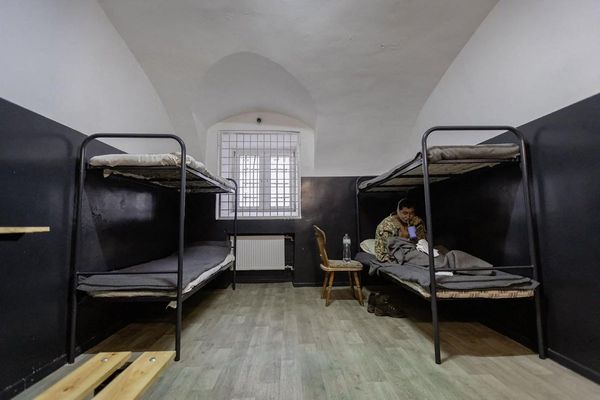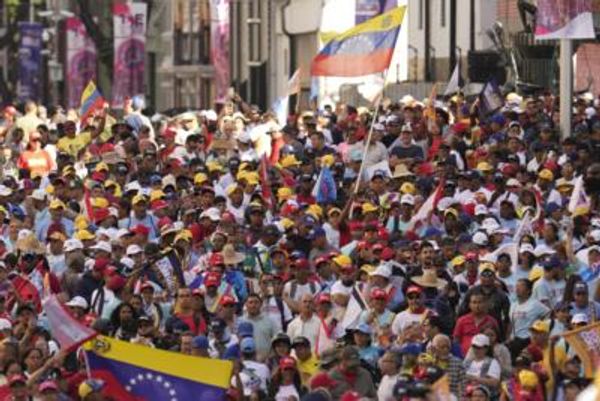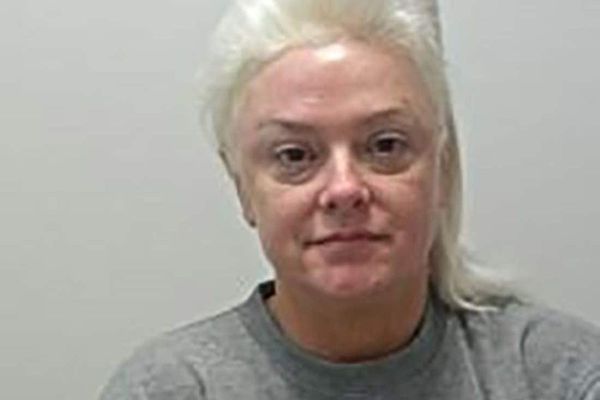
Whether you’ve spotted a rodent or suspect activity, nobody likes the thought of having a pest invasion. Figuring out how to get rid of mice (and how this differs from how to get rid of rats) can be unnerving at the best of times. Not only can rodents be a nuisance and cause property damage, but they are known to carry a host of diseases or trigger allergies that can affect your health.
But how do you know whether it’s a mouse or rat? It’s quite easy to mistake a young rat for an adult mouse if you can't tell them apart. In which case, knowing how to identify between the two rodents, and what to look out for, will make all the difference to methods of pest control.
Spotting these telltale signs of mice or rats will also indicate any problem areas where rodents might be entering your home. In which case, you’ll need to block all points of entry, including holes in brickwork, baseboards, around pipes and vent openings — which are some of the things that are attracting pests to your home.
So, before you call in pest control, here are the ways to tell the difference between mice or rats in your home.
1. Differences in appearance

If you’ve had the misfortune of spotting a rodent scurrying away, there are key differences to tell if it’s a mouse or a rat. Perhaps the main telltale sign is its size. Typically, adult mice grow up to 7 ½ inches in length (including tail), while adult rats are up to 18 inches in length.
Another key indicator are their tails — mice have thin, slightly hairy tails, while rats tend to have a thicker, scaly tail without hair.What’s more, a mouse has a triangular-shaped nose, and a rat’s nose is more rounded, wider and blunt. Generally, mice and rats can be brown or gray in color, but rats can also be black.
2. Droppings size
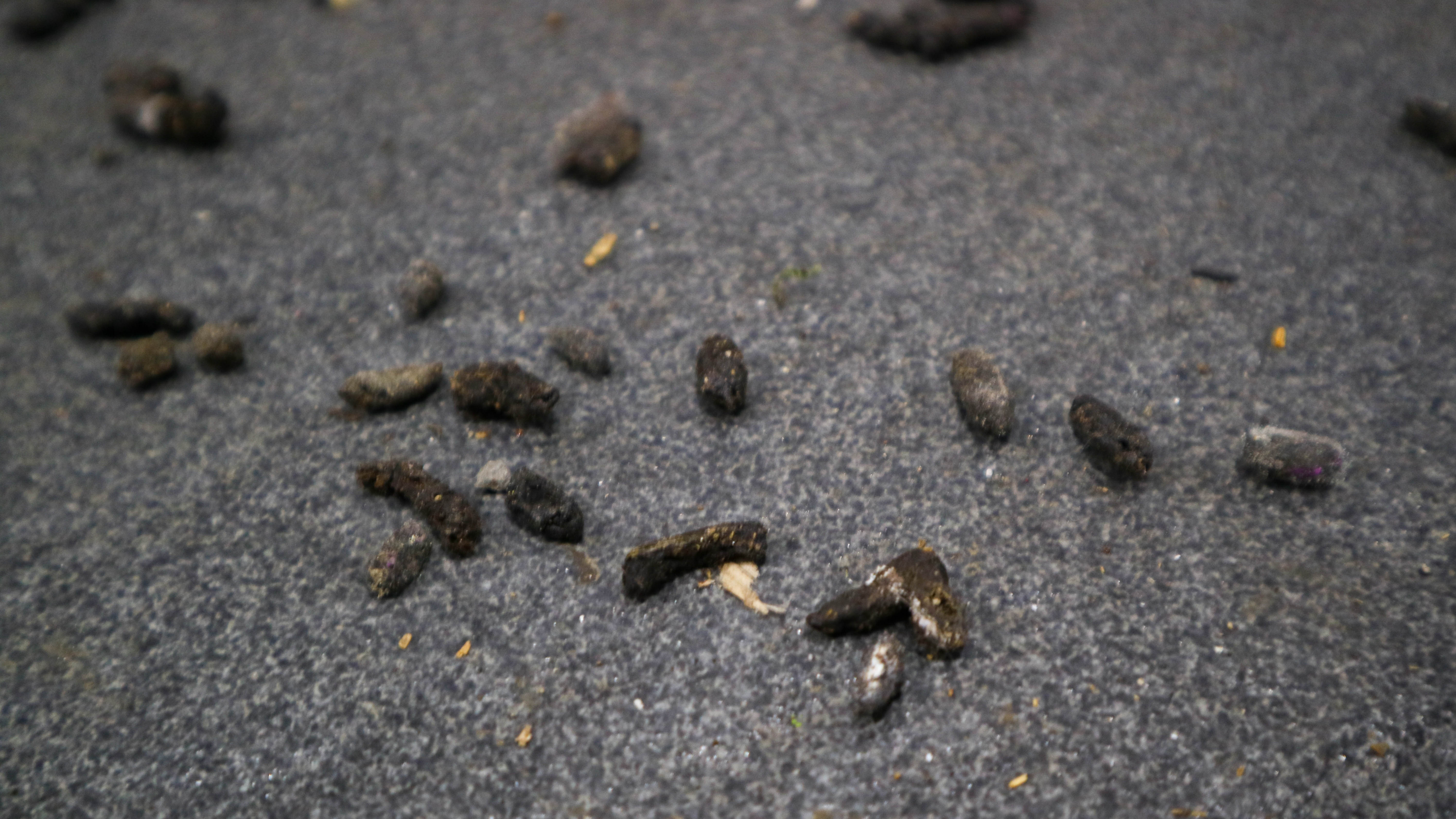
It’s always annoying when you spot droppings in or around your home, which is usually a telltale sign of rodent activity. This is also a good indicator to tell the difference between a mouse or rat.
Generally, mouse drops are small, measuring about ¼ inches long, and often resembling grains of rice with pointy ends. These are brown/black in color and usually found where mice travel and eat, such as under cabinets, inside the back of drawers, behind a stove, or in the pantry.
Rat droppings on the other hand, are double the size of mouse droppings, usually measuring about 3 ½ inches long, with blunt ends.
3. Movement of foods
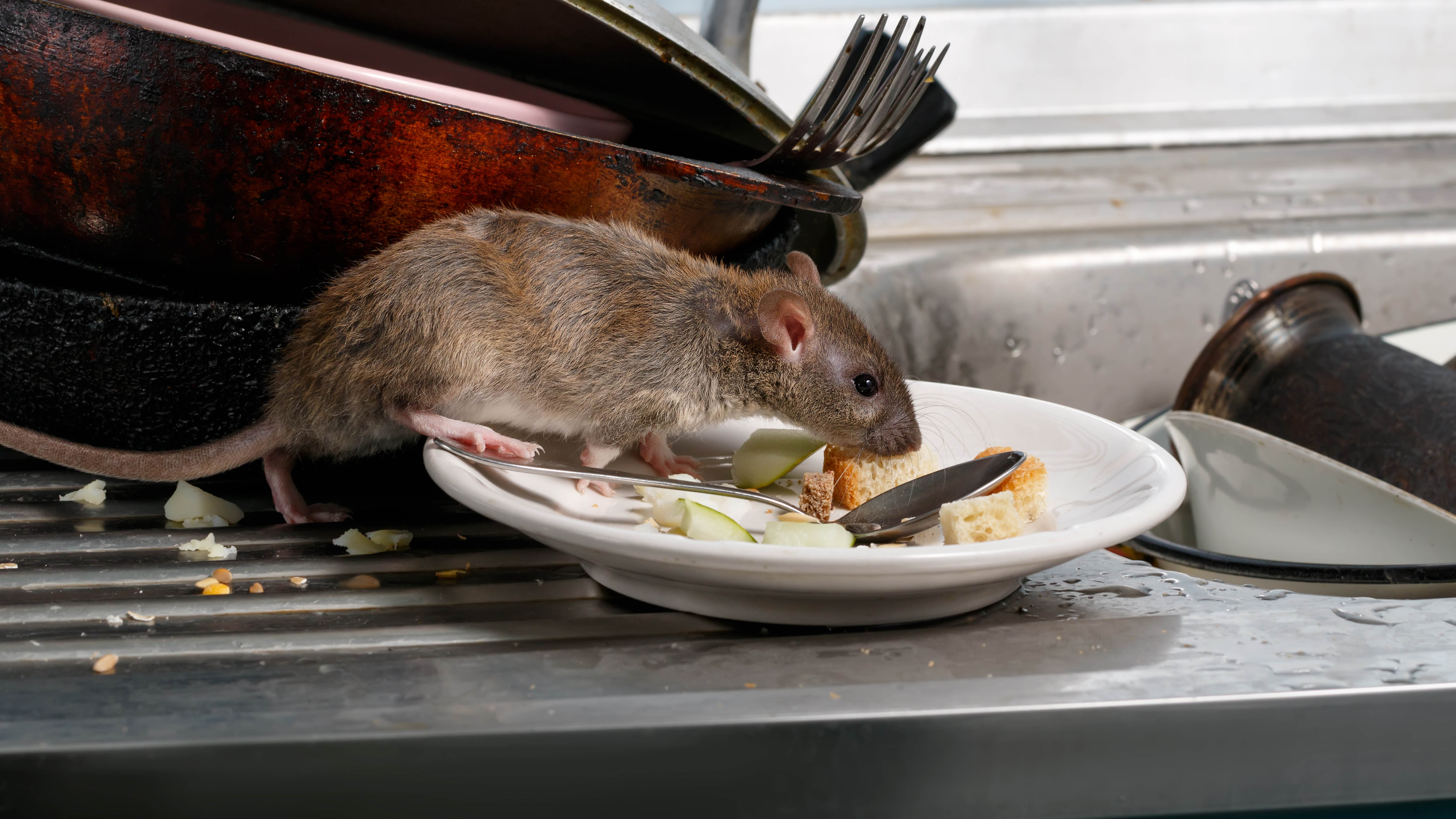
One of the main things that attract rodents to your home is a constant food supply. However, while mice eat small amounts of food at one location, rats tend to collect and move food from one place to the next.
This is because rats are larger in size and physically able to carry more food to hoard, and feast on. That’s why it’s always important to keep food/kitchen areas clean at all times. Sweep up any crumbs on floors and surfaces, and disinfect the areas with a cleaning spray. This will prevent rodents from coming to visit, since there are no longer treats for them!
4. Size of gnaw marks

Another indicator to look out for are gnaw marks. Whether it’s on a wall, or a cardboard box has been chewed on, there are distinct differences to know if it’s by a rat or a mouse.
Rats leave larger, incisor-pair gnaw marks, and have the ability to remove much more material and cause more damage. Besides chewing holes in things, they also leave more jagged edges along the materials than mice.
Mice can be just as destructive, but leave small, clear-cut holes, about the size of a dime. They also leave smoother edges along any gnawed materials.
5. Trap avoidance
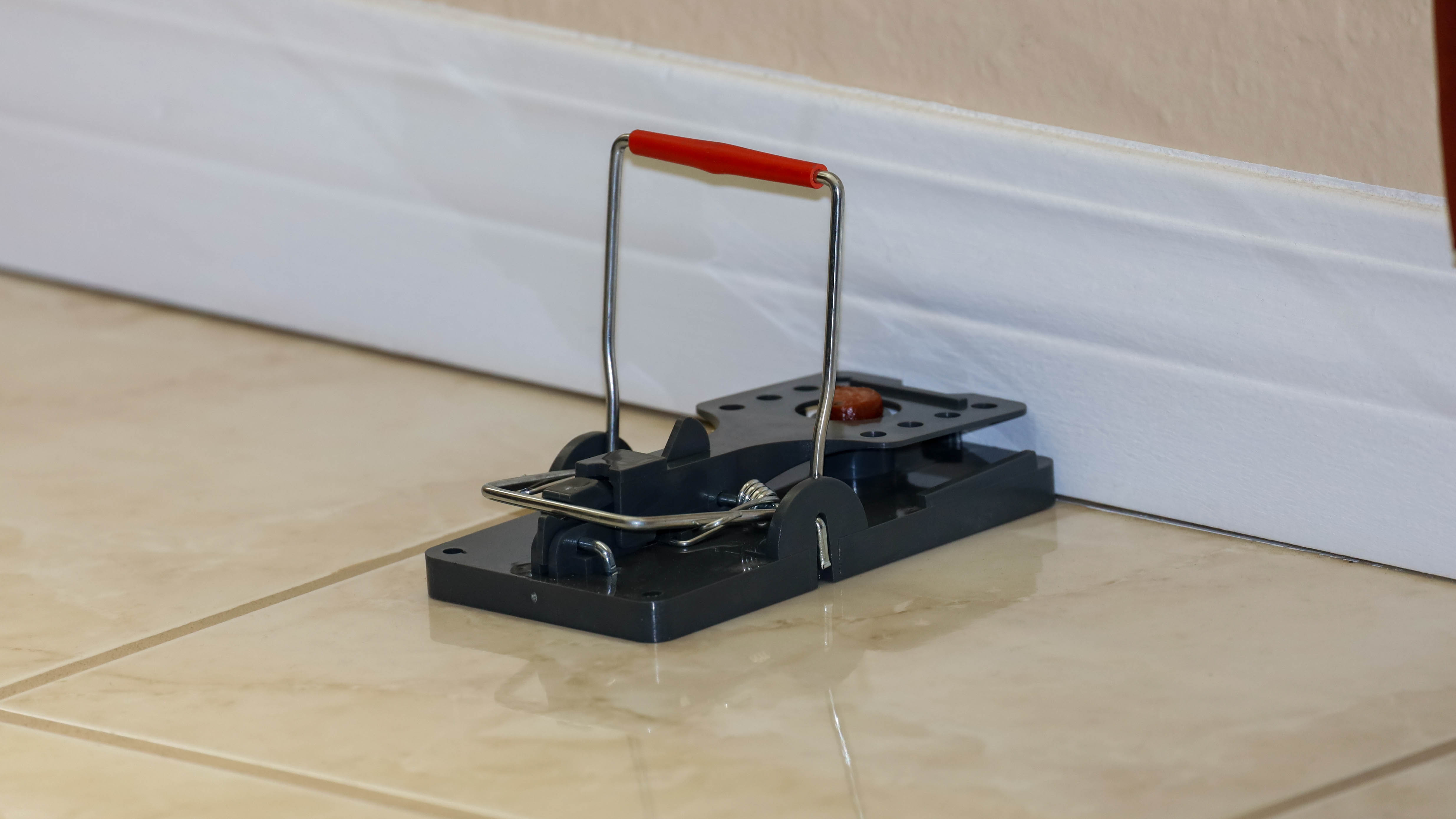
If you’ve set up mouse traps in trouble areas — without much success, you might be dealing with rats instead. Interestingly, mice are curious creatures, and like to investigate anything new. So, setting a trap directly in their path, with bait, would likely attract them.
Rats on the other hand are not as curious, and would choose to avoid things in their path. Such behaviours lessen as they get used to something new. Experts advise placing unset traps in the rat's path for several days before setting the traps.
Of course, if you’ve spotted these telltale signs, and are uncomfortable with trying to trap a rodent yourself, you can always call in a professional. Their expertise can help with the best placement of the traps as well as finding potential entryways. Plus, they can help dispose of the rat once it’s successfully caught as well.
